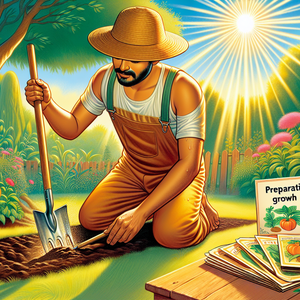Bridging Generations through Storytelling: The Timeless Art of Engaging All Ages

One of the most effective ways to bridge generations through storytelling is by utilizing universal themes that resonate regardless of age. Themes such as friendship, love, bravery, and self-discovery are timeless and can be approached from different angles suitable for both children and adults. For instance, Disney's animated film "Inside Out" tackles complex emotions through the eyes of a child, yet it resonates deeply with adults who have navigated similar feelings. The film's exploration of joy, sadness, and the intricate balance of human emotions serves as a reminder that both children and adults experience a broad spectrum of feelings. By exploring themes from multiple perspectives, storytellers can create narratives that foster empathy and understanding across age groups.
Humor that Bridges the Gap
Humor plays a crucial role in engaging both children and adults, and achieving this balance is a delicate art. Successful family-oriented shows often incorporate layered humor that can be appreciated on different levels. A prime example is "The Simpsons," which has entertained families for decades. While children may laugh at the slapstick antics of the characters, adults often appreciate the satirical commentary on society and culture. Interviews with writers from such shows reveal the intentional crafting of jokes that function on multiple levels, ensuring that both children and parents find something to laugh about. This layered humor not only entertains but also creates a sense of shared experience, as families can bond over their interpretations of jokes and references.
Narrative Complexity and Character Development
Another essential aspect of storytelling that appeals to all ages is the depth of narrative and character development. Shows that present well-rounded characters with relatable struggles can captivate a wide audience. Take "Avatar: The Last Airbender," for example. This series combines epic adventure with profound character arcs and moral dilemmas. The complexity of characters like Zuko, who struggles with identity and redemption, offers a narrative that resonates with older viewers while still captivating younger audiences with exciting action and fantasy elements. The richness of character development allows families to engage in discussions about personal growth and ethical choices, making the viewing experience more meaningful. Such narratives not only entertain but also encourage critical thinking and emotional intelligence across generations.
Examples of Successful Multi-Generational Storytelling
Numerous examples of shows and films successfully bridging the generational gap through storytelling abound. "Toy Story" has become a beloved franchise for both children and adults alike. The original film's themes of loyalty, friendship, and the fear of obsolescence resonate deeply with adults, while children are entertained by the adventure of toys coming to life. The continued success of these characters over generations demonstrates the power of storytelling to create lasting connections. Another example is the popular series "Bluey," which features a family of Australian Blue Heeler dogs. The show captures the imagination of young viewers with its vibrant animation and fun scenarios while embedding heartfelt lessons and humor that parents appreciate. The intergenerational appeal of "Bluey" has made it a favorite for families to watch together, highlighting the importance of shared experiences in media consumption. These examples illustrate how successful storytelling can resonate with diverse audiences, creating opportunities for families to bond over shared narratives.
The art of storytelling that bridges generations is a powerful tool for fostering connection and understanding among families. By employing universal themes, layered humor, and rich character development, creators can craft narratives that resonate with both children and adults. As we continue to navigate a world filled with diverse media, the importance of stories that resonate across age groups cannot be overstated. They not only entertain but also create opportunities for meaningful conversations, shared experiences, and lasting memories. In the end, it is through these stories that we continue to connect, learn, and grow together, no matter our age. By recognizing and harnessing the timeless art of storytelling, we can create more shows and narratives that entertain not just kids, but their parents too, enriching family dynamics and fostering a deeper understanding of one another across generations.
Scriptwriter for Animated Series
Disney, Nickelodeon, DreamWorks Animation
Core Responsibilities
Develop engaging scripts that resonate with both children and adult audiences, focusing on universal themes.
Collaborate with directors and producers to ensure narrative cohesion and character development.
Revise scripts based on feedback from peers and production teams to refine humor and emotional impact.
Required Skills
Strong understanding of pacing, character arcs, and humor that appeals to multiple age groups.
Experience in writing for animation or family-oriented content, with a portfolio showcasing relevant work.
Family Content Producer
PBS Kids, Netflix Family, Amazon Studios
Core Responsibilities
Oversee the production of family-oriented shows, ensuring the content is relatable and entertaining for all age groups.
Work closely with writers, directors, and marketing teams to align storytelling with audience expectations.
Conduct audience research to gather insights on preferences and trends among families.
Required Skills
Strong project management abilities with experience in media production.
Background in children’s media or family entertainment, with a proven track record of successful projects.
Narrative Designer for Video Games
Ubisoft, Epic Games, Insomniac Games
Core Responsibilities
Create immersive storylines and character backstories that engage players of different ages.
Collaborate with game developers to integrate narrative elements into gameplay mechanics.
Ensure that dialogues and narratives are accessible yet layered, appealing to both younger and older gamers.
Required Skills
Proficiency in storytelling techniques specific to interactive media, including branching narratives.
Experience in game writing or a related field, with samples demonstrating narrative depth and character complexity.
Children’s Book Author
Scholastic, Penguin Random House, HarperCollins
Core Responsibilities
Write and illustrate stories that captivate young readers while embedding themes that resonate with parents.
Conduct readings and workshops at schools and libraries to engage with the audience directly.
Collaborate with illustrators and editors to bring stories to life visually and narratively.
Required Skills
Strong writing skills with a flair for creating memorable characters and engaging plots.
Understanding of age-appropriate themes and language, along with experience in children’s literature.
Media Educator for Family Programming
Local education institutions, cultural organizations, nonprofit family services
Core Responsibilities
Design and implement educational programming that teaches families the art of storytelling and media literacy.
Facilitate workshops and discussions that encourage intergenerational storytelling practices.
Evaluate the effectiveness of programs and adjust curricula based on participant feedback and learning outcomes.
Required Skills
Strong communication and presentation skills, with experience in educational settings.
Background in media studies, education, or a related field with a focus on family engagement.


